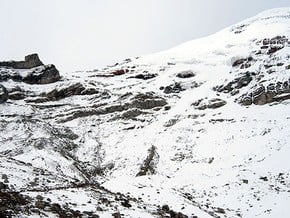
Normal Route, Chimborazo (6 310 m / 20 702 ft)
| Mountain: | Chimborazo (6 310 m / 20 702 ft) |
| Activity type: | Mountaineering |
| Activity level: | Challenging |
| Elevation: | 5 030 m / 16 503 ft |
| Duration: | 16 Hour(s) |
| Expenses: | from$ 3 000 |
Overview
| Route Name: |
Normal Route, North Side via the Castillo, El Castillo cole, С севера через перевал Кастилло, Castillo Route, Кастилло, Castle, Southwest Flank, Юго-Западное ребро, Стандартный Маршрут |
| Activity type: |
Mountaineering |
| Activity level: |
Challenging |
| Type of Climb: |
Snow & Ice |
| Location: |
South America, Ecuador: (Provincia del Chimborazo) |
| Starting Point: | |
| Parent Range: | |
| Mountain: | |
| First Ascent: |
??/1/2015 |
| Duration: |
16 Hour(s) |
| Max. Elevation: |
5 030m / 16 503 ft |
| Vertical Gain: |
1 280m / 4 199 ft |
| Length: |
7km / 4 miles |
| Climbing Season(s): | Please update |
| Nearst Airport(s): |
|
| Convenience Center(s): | |
| National Park(s): |
You will depart from the Whymper Refuge at midnight and continue on the Castillo route. Once over the edge of the glacier, you have to overcome a section of frozen scree. You'll proceed on a long ridge for about 5-6 hours then you climb the final steps to the Veintimilla summit. Then you will traverse across to the Whymper summit, the furthest point from the center of the Earth. The ascent will take up to 10 hours approximately and usually climbers descend to the Refuge in four-five hours.
show:
- 6
- 18
- 36
|
Availability
|


